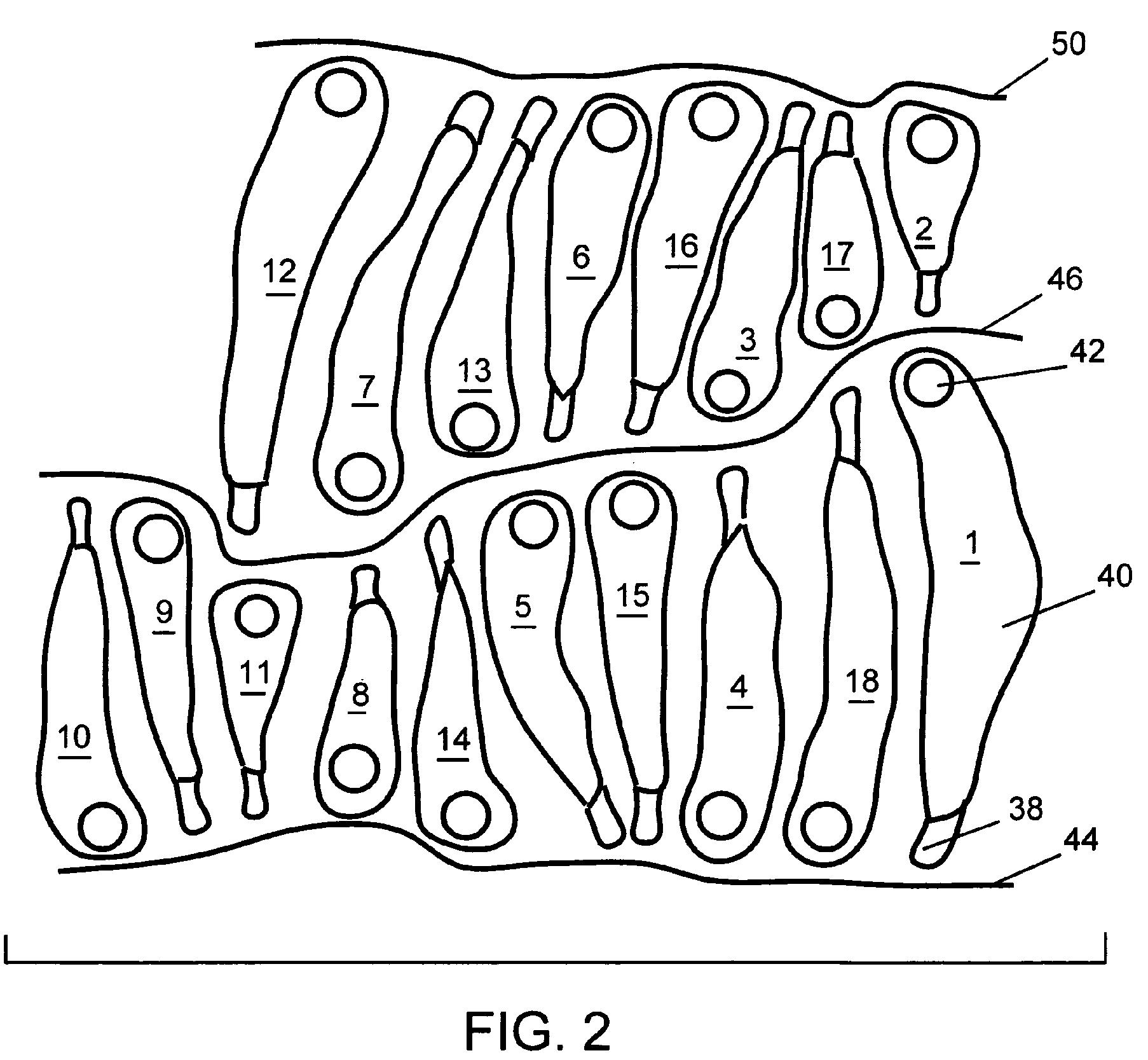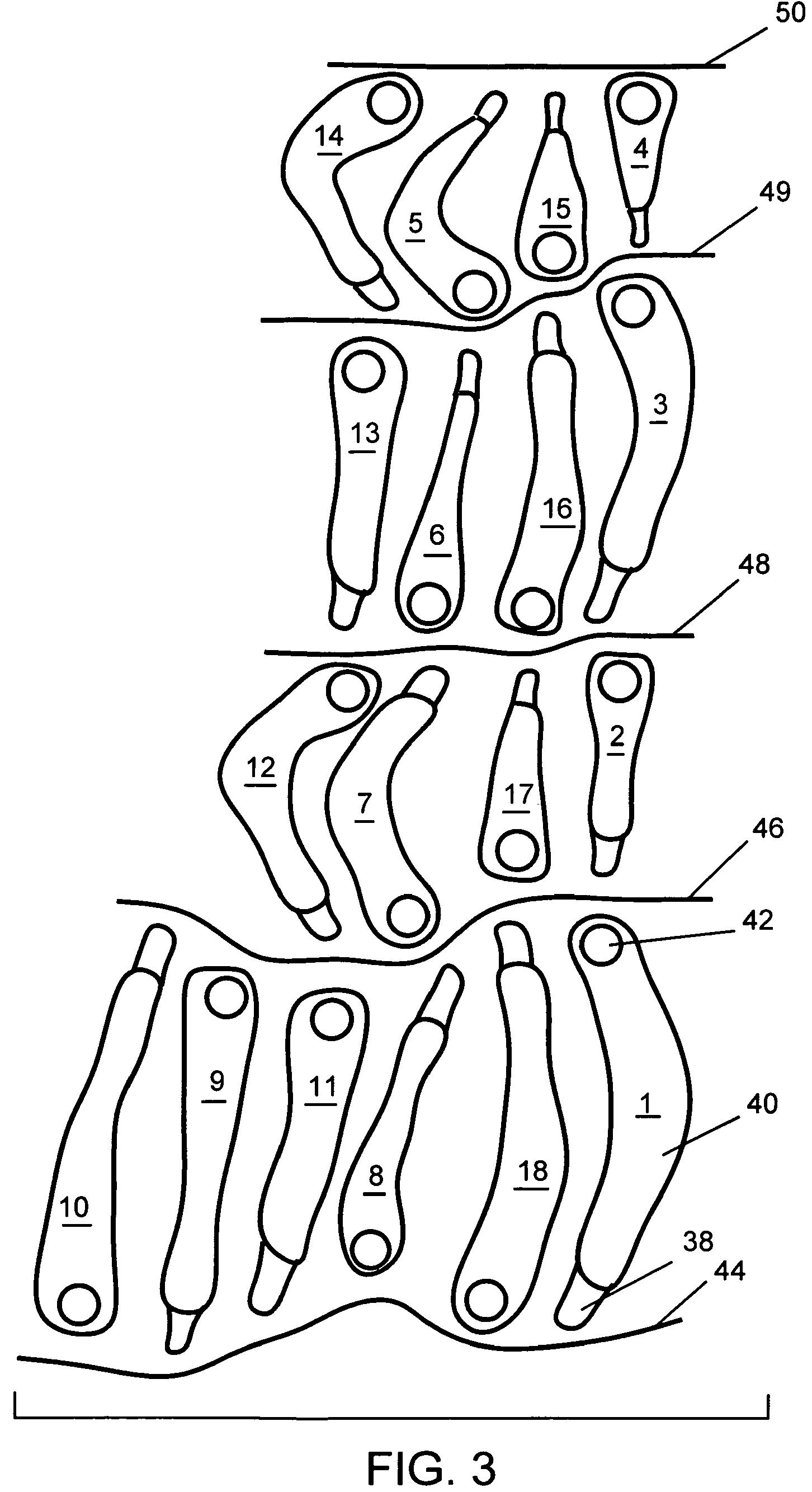A Week Dedicated to Golf Course Patents – Day 1
Ever wonder if you can patent a golf course’s architecture? Well, this week I will provide you with some interesting golf course layout patents that you may find hard to believe. Additionally, if you are a golf course architecture aficionado then you should avoid these posts because they will bring tears to your eyes (or make you puke).
The first in the series of golf course patents is a patent titled “Select Pace Golf Course,” which issued this week. The patent is USPN


The patent explains:
Conventional golf courses are laid out with the holes following one another in sequential manner to more or less fit well into the terrain of the land on which they are built. They are designed to be played in sequential manner from hole 1 through hole 18 (on an 18 hole course). When players finish playing one hole, there is normally only one nearby tee to go to next, which is the next sequential hole number.
It is commonly known that the main complaint of golfers is the pace of play, which is usually the pace of the slowest group on the golf course. The pace is often 5 hours or more.
This complaint stems from the fact that the holes on conventional courses are designed for and played in sequential order and cannot practically be played in random order. This is because most tee areas are an entire fairway away from other tees or would necessitate crossing over other fairways, which may be in use, in order to reach them. This makes it too time consuming, confusing, dangerous, frustrating, and disruptive to other players, to allow playing the holes in random order. In other words, it would be chaotic. Someone skilled in the art would know that random order of play would not be allowed on a standard golf course on which most holes are occupied by players. Just the occasional nearness of more than one tee area, that may or may not be open, would not be enough to make it practical. Players that are stuck behind a slow group might have to travel the length of many fairways in order to hopefully find an open tee and fairway. That would defeat the purpose of trying to play a faster round of golf.
Most golf courses attempt to alleviate the pace of play problem by having rangers or marshals drive around the course. The rangers try to encourage slower groups to play faster. This has very limited success. Despite their best efforts, the pace of play is often still over 5 hours because of the inability of some groups to play any faster.
I am all for speeding up the pace of play, but I would prefer to play a slower round on a nice unique design rather than a blazing fast round on an, umm, less unique design.
Dave Dawsey – Monitoring Golf Course Intellectual Property
PS – click HERE to check out interesting putter patents
David,
After reading your comments about the SelectPace Golf Course at Golf-Patents.com I would like to respectfully respond.
Yes, I agree that a sketch of one possible layout on paper, to illustrate the concept, may look very boring when you can’t see the terrain with lakes, streams, trees, elevation changes, bunkers and doglegs etc.
However, each hole can still be unique and interesting depending on the terrain and on the skill of the designer. Each hole can still be as unique as any other golf hole on any conventional golf course. I believe that golfers playing a particular hole, are not so concerned with the relative location of the other holes, only the hole that they are playing at any given time. Would it create a challenge for the designer? Yes, it would. Would it work on just any piece of land? No, definitely not.
This is only intended as a small niche market, with maybe only one or two courses of this type in any particular city. It would just be another choice. There may be some who might not want to play this type of course for whatever reason, but I feel that there would be many who would play it, if well designed, and in good condition. There are several reasons for people to want to play it, such as people who want to play a fast round on a full-sized course and don’t have time for a 5 hour round. After being in the golf business for many years and playing golf for over 50 years, I have noticed that there are many impatient players who cannot tolerate waiting for other groups of players even for 1 minute. Some of them even go to the golf shop to demand refunds after a very slow round. There are also novices who don’t want to be intimidated by impatient players behind them while they are still just learning the game. The golf industry certainly needs more new players taking up the game right now, as the number of players has been declining recently. Golf instructors, who give playing lessons, want to concentrate on their lesson and not be so concerned about holding up the group behind them. Many people simply don’t have time for a 4-5 hour round. Twosomes and Threesomes wouldn’t have to wait for foursomes. And there is no reason why each individual hole can’t be just as well designed and as unique as holes on any other course.
You can read more about this at my website.
Very respectfully yours,
Gerald Larson
president
SelectPace Golf
